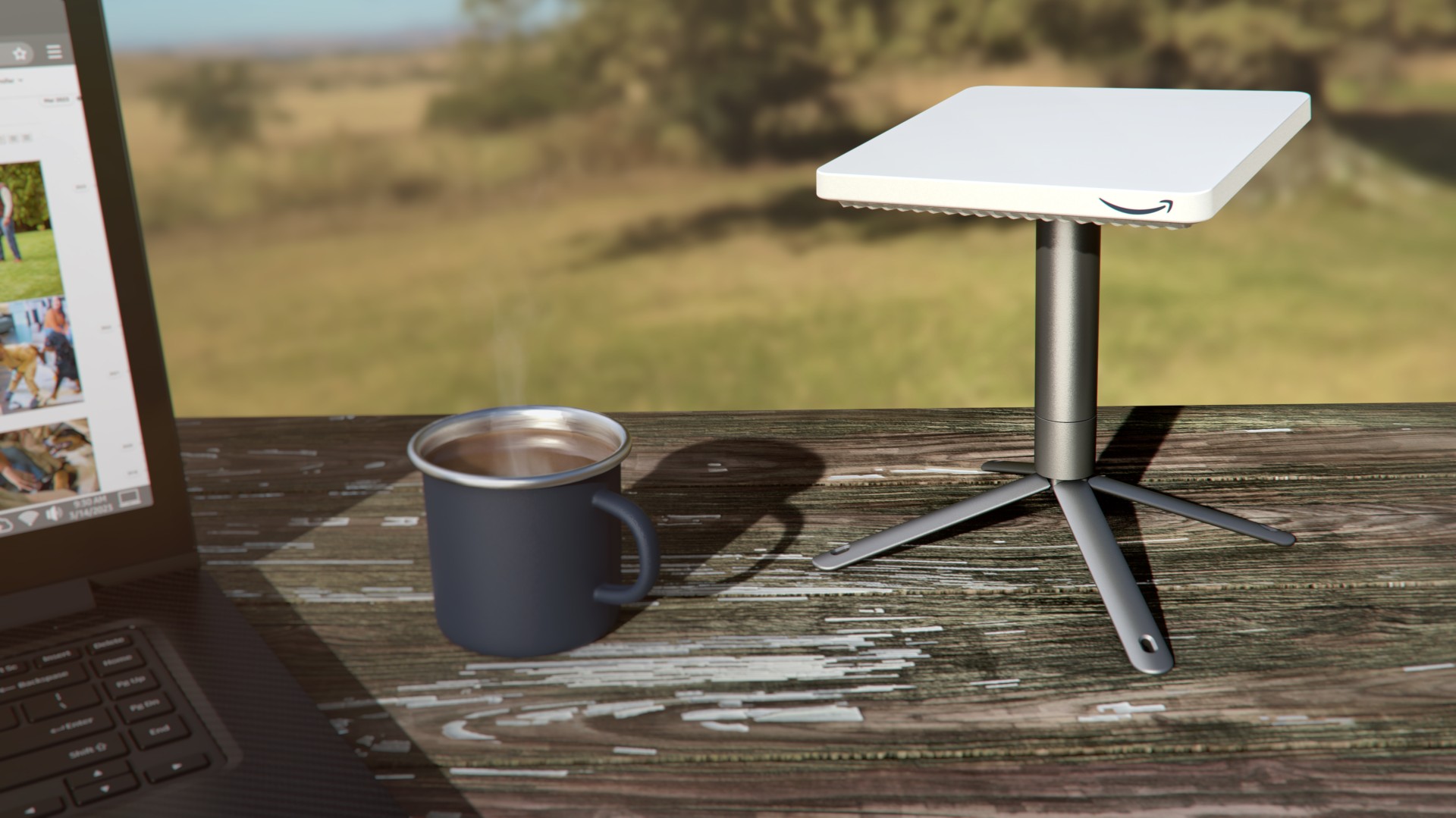Amazon's Kuiper satellite constellation will use these sleek antennas to serve you internet

Amazon has revealed three terminals that customers might use to link up with Project Kuiper, the company's satellite internet program.
One day, Amazon hopes those satellites will provide internet access to users in remote areas. Now, Amazon has previewed the grounded part of that plan — Project Kuiper's receiving terminals — at the SATELLITE space technology conference in Washington, D.C.
The standard terminal resembles a small stool and has a capacity of 400 megabits per second. Amazon will market this terminal to residential and small business customers. The company didn't specify how much the receivers would cost customers but has said each one costs Amazon less than $400 to produce.
Related: Amazon gets green light to launch 3,000-satellite Kuiper constellation
Amazon also unveiled one larger and one smaller variant, which resemble a coffee table and a footstool, respectively. The larger terminal, which has a capacity of 1 gigabit per second, will be designed for businesses and governments. The smaller terminal, aimed at budget residential customers or enterprise customers who want to access Project Kuiper internet from the field, will have a top speed of 100 megabits per second. Amazon didn't indicate how much these two models would cost, either.
These terminals will link to satellites in low Earth orbit situated at altitudes of roughly 365 miles (587 kilometers), 380 miles (612 km) and 390 miles (628 km), in Ka-band radio frequencies: 26.5-40 gigahertz. (Amazon still needs Federal Communications Commission (FCC) approval to operate in those frequencies.) eEach satellite will have a total capacity of 1 terabit per second.
Amazon now expects the project's first test launches to lift off aboard United Launch Alliance's Vulcan Centaur rocket this year, Reuters reported, followed by the first satellites in Kuiper's ultimate constellation in early 2024. Amazon has booked up to 83 launches for the program.
Breaking space news, the latest updates on rocket launches, skywatching events and more!
Project Kuiper's satellites will become more sparkling points in an increasingly crowded sky. Satellite constellations that theoretically allow people to communicate from anywhere in the world aren't new; satellite phone provider Iridium, for instance, launched 77 satellites into orbit in the 1990s. But in the past decade, the push to bring internet connectivity to places that lack it has driven the rise of far larger constellations in low Earth orbit.
For instance, since 2017, Starlink has deployed 3,803 satellites in orbit, 3,242 of which are operational, according to astronomer Jonathan McDowell at the Harvard–Smithsonian Center for Astrophysics, who tracks satellite constellations on his website. Many astronomers and stargazers have complained that Starlink's satellites leave visible trails that interfere with their skywatching. A Starlink terminal costs $599 upfront, plus a $110 monthly subscription, Ars Technica reported.
Another firm, the partly U.K.-government-owned OneWeb, began launching satellites in 2020. Despite bankruptcy and the Russian invasion of Ukraine interrupting OneWeb's planned launches from Baikonur Cosmodrome (OneWeb switched its launches to India) its constellation now has 582 satellites in orbit, 579 of which are operational, according to McDowell. OneWeb plans to target businesses rather than individual customers, CNBC reported.
Amazon says Project Kuiper will eventually consist of 3,236 satellites; Amazon's FCC license requires that the company deploy at least half of that total by 2026.
Follow us @Spacedotcom, Facebook and Instagram.

Rahul Rao is a graduate of New York University's SHERP and a freelance science writer, regularly covering physics, space, and infrastructure. His work has appeared in Gizmodo, Popular Science, Inverse, IEEE Spectrum, and Continuum. He enjoys riding trains for fun, and he has seen every surviving episode of Doctor Who. He holds a masters degree in science writing from New York University's Science, Health and Environmental Reporting Program (SHERP) and earned a bachelors degree from Vanderbilt University, where he studied English and physics.

